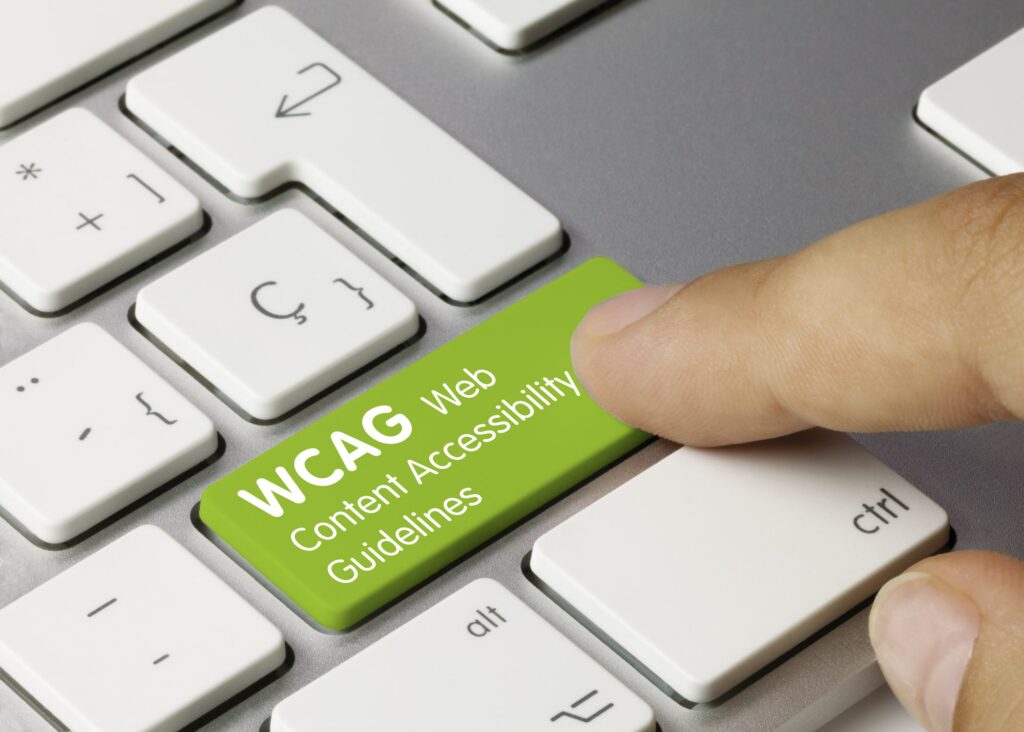Beyond Compliance: Going the Extra Mile for Accessibility in Content Creation

When we think about accessible content, many people tend to focus on checking the boxes: Let’s ensure that we’re compliant with section 508 compliance, let’s make sure we don’t get sued, let’s follow the Web Content Accessibility Guidelines (WCAG), and so on. Honestly, this is just a fear mindset, where you ensure accessibility as a way to avoid a lawsuit.
While it is essential to meet accessibility guidelines and comply with legislation like the Americans with Disabilities Act (ADA), it’s important to understand that true accessibility goes beyond mere compliance. It’s about ensuring your readers feel included when interacting with you online. This requires changing the culture of content development to understand and incorporate accessibility at all steps in the process. It’s also about empathizing with and accommodating the unique needs of all individuals.
Strive for True Accessibility
Accessibility is not only about tools and technologies. It’s also about the mindset with which you approach content creation. When you aim for true inclusivity, you aim to understand and cater to the unique experiences and needs of all users.
This implies developing content that is accessible, comprehensible, and usable by individuals of all abilities, without the need for modifications or specific design. It requires acknowledging and accommodating the full range of human diversity, considering various aspects such as capability, language, cultural background, gender, age, and other distinct human characteristics.
Take an Extra Mile with Pro-Active Accessibility
Being proactive in your approach to accessibility can take your content creation to a new level. Here are ways to accomplish this:
1. Continuous Learning and Improving
Keep up with the latest accessibility guidelines and standards, like the Web Content Accessibility Guidelines, which are updated regularly to accommodate new technologies and understandings of accessibility. Having a checklist of best practices that you can refer to whenever new content is created or added to your website is also essential.
2. Structure Content Properly
It can be daunting for some people with disabilities to navigate a large document. As much as possible, try to keep the structure of your content simple and easy to understand. Ensure the content is logically arranged using suitable headings, subheadings, and paragraphs.
This systematic arrangement enhances navigation and comprehension of the document’s structure. Assistive technologies, such as screen readers, depend on these heading tags to deliver the content to users in an orderly manner.
3. Test with Assistive Technologies
It is essential to test your content regularly for accessibility. Assistive technologies such as screen readers and magnification tools can be instrumental in detecting and addressing accessibility challenges. This evaluation process sheds light on possible obstacles and areas for improvement and enables you to perceive your content from the viewpoint of users with disabilities. Involving individuals with disabilities or experts in accessibility during the testing phase can also provide essential feedback and unique perspectives.
4. Comprehensive Captioning and Description
When it comes to multimedia content, go beyond basic captions and alt text. Use descriptive video services (DVS) for videos, which not only describe the dialogue but also the non-verbal aspects of the content. Make sure to include comprehensive descriptions for images.
5. Educate Content Creators
It is crucial to offer accessibility training to everyone involved in creating web content. When all team members are well-versed in accessibility and approach it with a shared understanding, their work becomes proactive rather than reactive. They take responsibility for improving their content, coding, and other resources, making them more user-friendly for everyone.
Learn More About Creating Accessible Content at Pink Dog Digital
Ready to embrace inclusivity and create accessible content that reaches and resonates with everyone? Pink Dog Digital can help! Our team of digital marketing experts specializes in accessible content creation, interactive web design, email marketing, and social media marketing.
Let’s go beyond compliance together and create a digital experience that is truly accessible for all. Get in touch with us by filling out our online contact form or sending us an email at pinkdogdigital@gmail.com to learn more.

